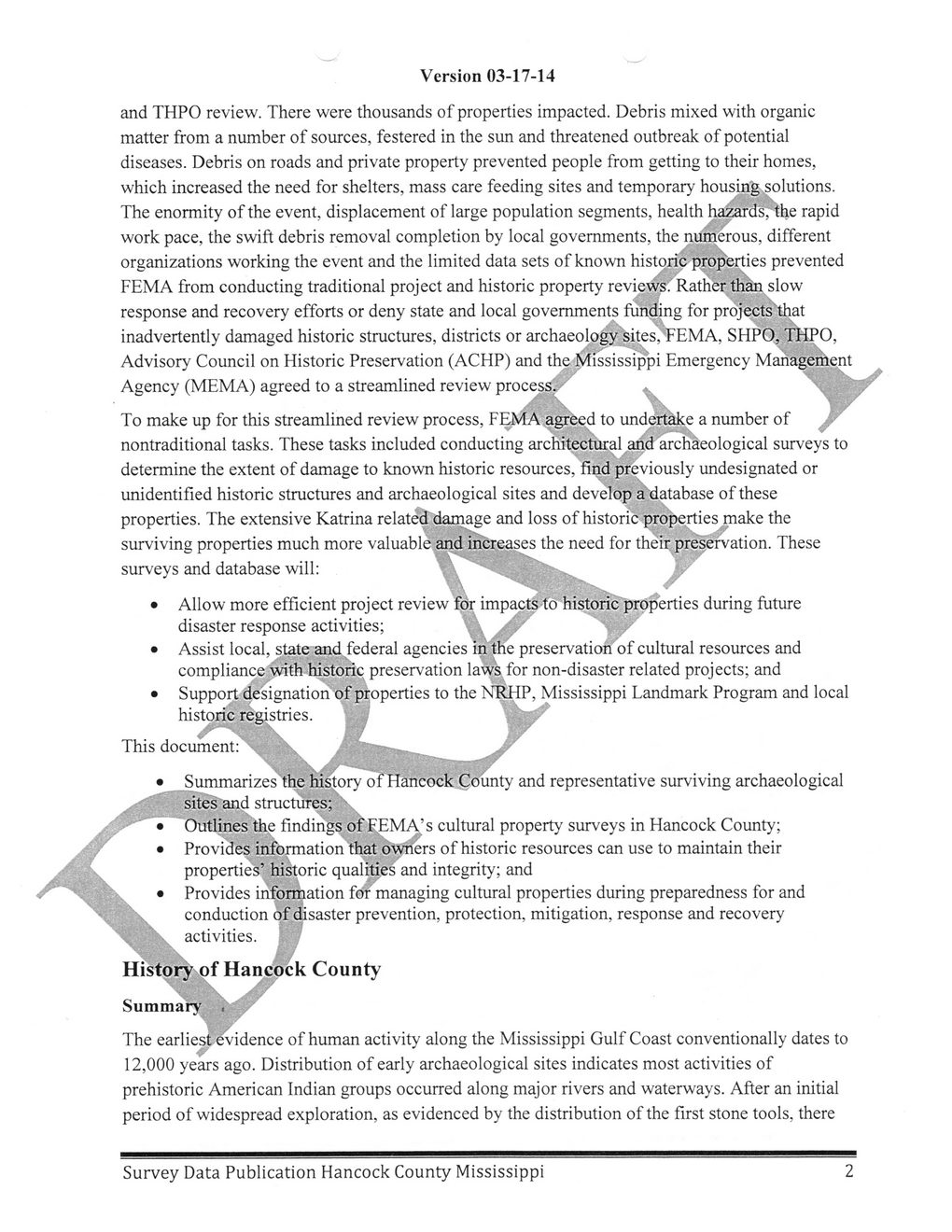This text was obtained via automated optical character recognition.
It has not been edited and may therefore contain several errors.
Version 03-17-14 and THPO review. There were thousands of properties impacted. Debris mixed with organic matter from a number of sources, festered in the sun and threatened outbreak of potential diseases. Debris on roads and private property prevented people from getting to their homes, which increased the need for shelters, mass care feeding sites and temporary housing solutions. The enormity of the event, displacement of large population segments, health hazards, the rapid work pace, the swift debris removal completion by local governments, the numerous, different organizations working the event and the limited data sets of known historic properties prevented FEMA from conducting traditional project and historic property reviews. Rather than slow response and recovery efforts or deny state and local governments funding for projects that inadvertently damaged historic structures, districts or archaeology sites, FEMA, SHPO, THPO, Advisory Council on Historic Preservation (ACHP) and the Mississippi Emergency Management Agency (MEMA) agreed to a streamlined review process. - To make up for this streamlined review process, FEMA agreed to undertake a number of / nontraditional tasks. These tasks included conducting architectural and archaeological surveys to determine the extent of damage to known historic resources, find previously undesignated or unidentified historic structures and archaeological sites and develop a database of these properties. The extensive Katrina related damage and loss of historic properties make the surviving properties much more valuable and increases the need for their preservation. These surveys and database will: . • Allow more efficient project review for impacts to historic properties during future disaster response activities; , \ / \ / • Assist local, state and federal agencies in the preservation of cultural resources and compliance with historic preservation laws for non-disaster related projects; and • Support designation of properties to the NRHP, Mississippi Landmark Program and local historic registries. This document: ■ ~ • Summarizes the history of Hancock County and representative surviving archaeological sites and structures; \ • Outlines the findings of FEMA.’s cultural property surveys in Hancock County; • Provides information that owners of historic resources can use to maintain their properties’ historic qualities and integrity; and • Provides information for managing cultural properties during preparedness for and conduction of disaster prevention, protection, mitigation, response and recovery v \ activities. History of Hancock County \ Summary . The earliest evidence of human activity along the Mississippi Gulf Coast conventionally dates to 12,000 years ago. Distribution of early archaeological sites indicates most activities of prehistoric American Indian groups occurred along major rivers and waterways. After an initial period of widespread exploration, as evidenced by the distribution of the first stone tools, there Survey Data Publication Hancock County Mississippi 2

Hancock County History and Archeology Survey-Publication-Data-2014-(04)